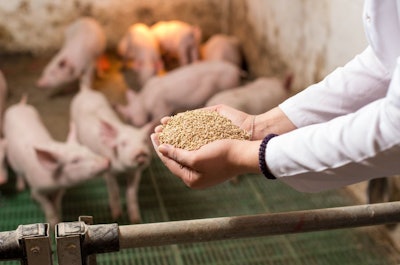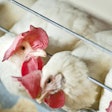
Lower fat, higher protein content makes modern DDGS a valuable ingredient in pig diets, study suggests
Greater efficiencies in modern corn ethanol plants has increased the protein content of distiller’s dried grains with solubles (DDGS), and reduced fat content may remove previous limitations on its use in pig diets.
Today’s corn-ethanol plants are capable of extracting more oil than in the past, resulting in DDGS with lower fat content. Predictably, this means these low-oil DDGS offer less energy to pigs and other animals that eat the grain, according to a study released this year by the University of Illinois.
The study, published in Translational Animal Science and funded by Cargill and POET Nutrition, found low-oil DDGS contained between 6% and 9% fat, compared with 10-14% in conventional DDGS.
However, the study also found that the low-oil DDGS was a better source of higher-quality protein, which could potentially offset the need for traditional protein sources such as soybean meal.
“DDGS is an established ingredient now, and even with the lower oil concentration, it’s still a very valuable ingredient for growing and producing swine,” Stein said.
In fact, the lower fat concentration may make DDGS even more useful as a feed ingredient, Stein said. Conventional wisdom is that DDGS should be restricted in the diets of swine three to four weeks prior to market, because the high fat concentration can cause problems for finishing pigs. Low-oil DDGS, on the other hand, could be used throughout the lifespan, Stein said.
The improved protein content was not tied to the fat content, but rather is likely a result of improved handling and drying methods in ethanol production, according to Hans Stein, a professor of animal nutrition at the University of Illinois and one of the co-authors on the report. He said conventional DDGS has seen a similar increase in protein content in recent years as drying methods have improved.
However, Stein said the protein content of DDGS would likely soon hit a ceiling, as most DDGS now contains roughly the same amount of protein as corn.
“They take good care of it and don’t destroy any protein,” when using modern drying techniques, Stein said.
There are new products coming onto the market, Stein said, that aim to increase the protein content of DDGS by adding other ingredients. Future research, he said, will likely evaluate the use of these offerings.















